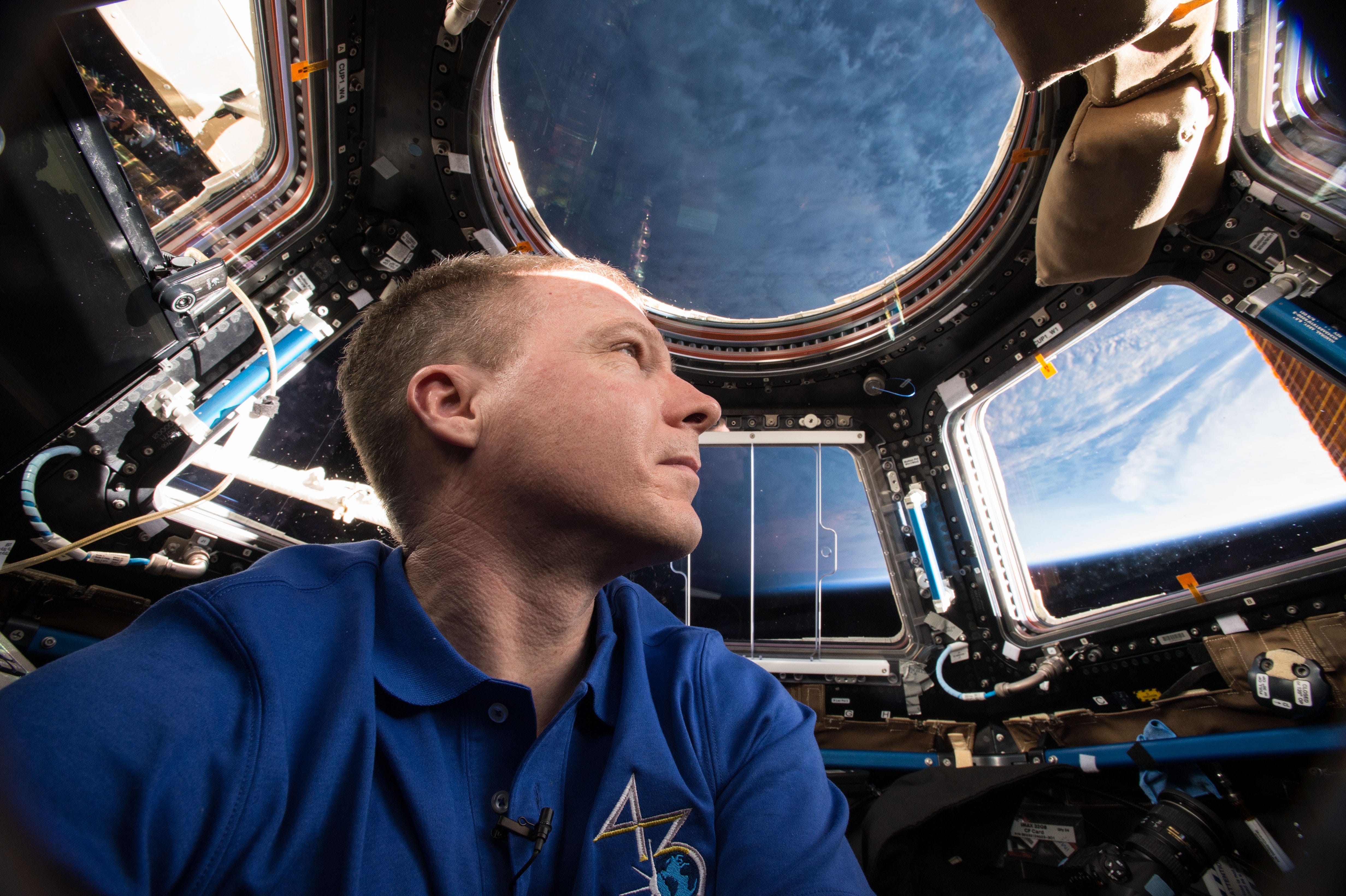In May 2015, an explosion with the force of a planet-sized nuclear bomb erupted on the surface of the sun, ejecting hundreds of millions of tons of magnetized particles toward the Earth. These particles were caught by Earth’s magnetic field and pulled toward the North and South Poles. Their sheer volume and energy excited the atoms of the atmosphere into a bright, colorful dance. Hurtling through this display at 4.8 miles per second was astronaut Terry Virts.
“I was floating through the middle of a living cloud of green radiation,” recalls Virts in his photobook View from Above. The experience, he says was, “Surreal, supernatural even, and one of the most unearthly experiences of my life… I will forever be grateful for the strokes of luck that made that experience possible.”
Virts was weightlessly floating in the International Space Station’s Cupola module, a domed observation tower with seven windows offering a 360-degree view of the exterior of the station and space beyond. The center window, the largest single pane ever put in space, looks down at the Earth as it turns below. The strokes of luck Virts mentions include the extension of his mission, the timing of the solar event that caused the unusually large auroras, and the orbital path of the station that brought him within the display. But perhaps the most fortuitous element of Virts’ experience, and the most essential, was the existence of the Cupola; during the module’s proposal and design, some in NASA’s leadership thought it superfluous and it was almost never launched.

Virts in the Cupola during the expedition that brought him through the aurora. NASA
In the nine years since its installation on the station, the Cupola has hosted many such incredible experiences for astronauts. The photos and videos they’ve taken within it and through its windows have helped to shape the cultural understanding of human spaceflight on Earth. But the experiential and cultural contributions of the module are nearly incidental; NASA and the European Space Agency (ESA) designed the module for its more practical applications.
The Cupola was launched aboard the space shuttle Endeavor on February 8, 2010 — Virts’ first spaceflight. It is equipped with a robotics workstation, allowing astronauts to observe exterior robotic parts directly while they control them. They can also support colleagues on spacewalks and help with the docking and undocking of visiting spacecraft. Using the large central window, astronauts can make scientific observations and photographs of the Earth, and at night they can get clear looks at celestial objects as well.
“Multifunctionality is what NASA’s always looking for in the equipment that it flies,” says Jennifer Levasseur, a space history curator for the Smithsonian’s Air and Space Museum. Getting anything into space is costly and fuel intensive, so there are strict limits on what can be launched. Equipment that can fill many roles is ideal. This philosophy applies to astronauts as well — pilots, for instance, are trained in engineering and perform experiments for earthbound scientists of all disciplines.
“NASA wants one thing to serve lots of purposes,” Levasseur says. The Cupola really does that, and it has the added benefit of just being incredibly cool.”
In addition to the Cupola’s operational uses, it provides psychological benefits. In a NASA report on mitigating mental health issues on long-duration spaceflights, psychologist Anne Kearney notes the “overwhelming” support by astronauts to include windows. They offer astronauts, “a sense of perspective and ground one in reality.” Collections of windows like the Cupola that offer a three-dimensional, immersive experience are even better. Psychologists on the ground who regularly check in on the astronauts even prescribe time in the Cupola for its soothing properties.
#photography #science #space #history #culture #data science